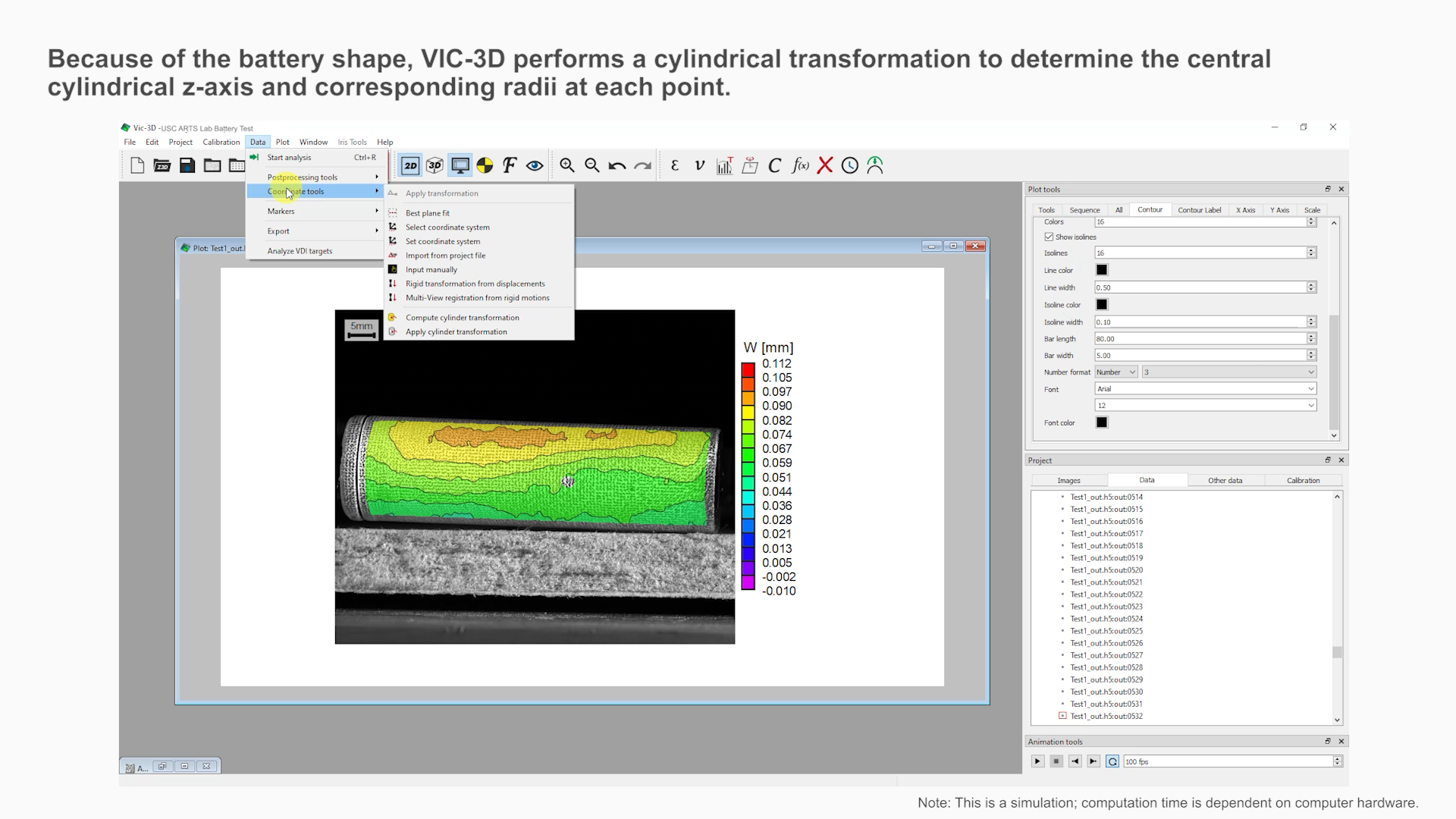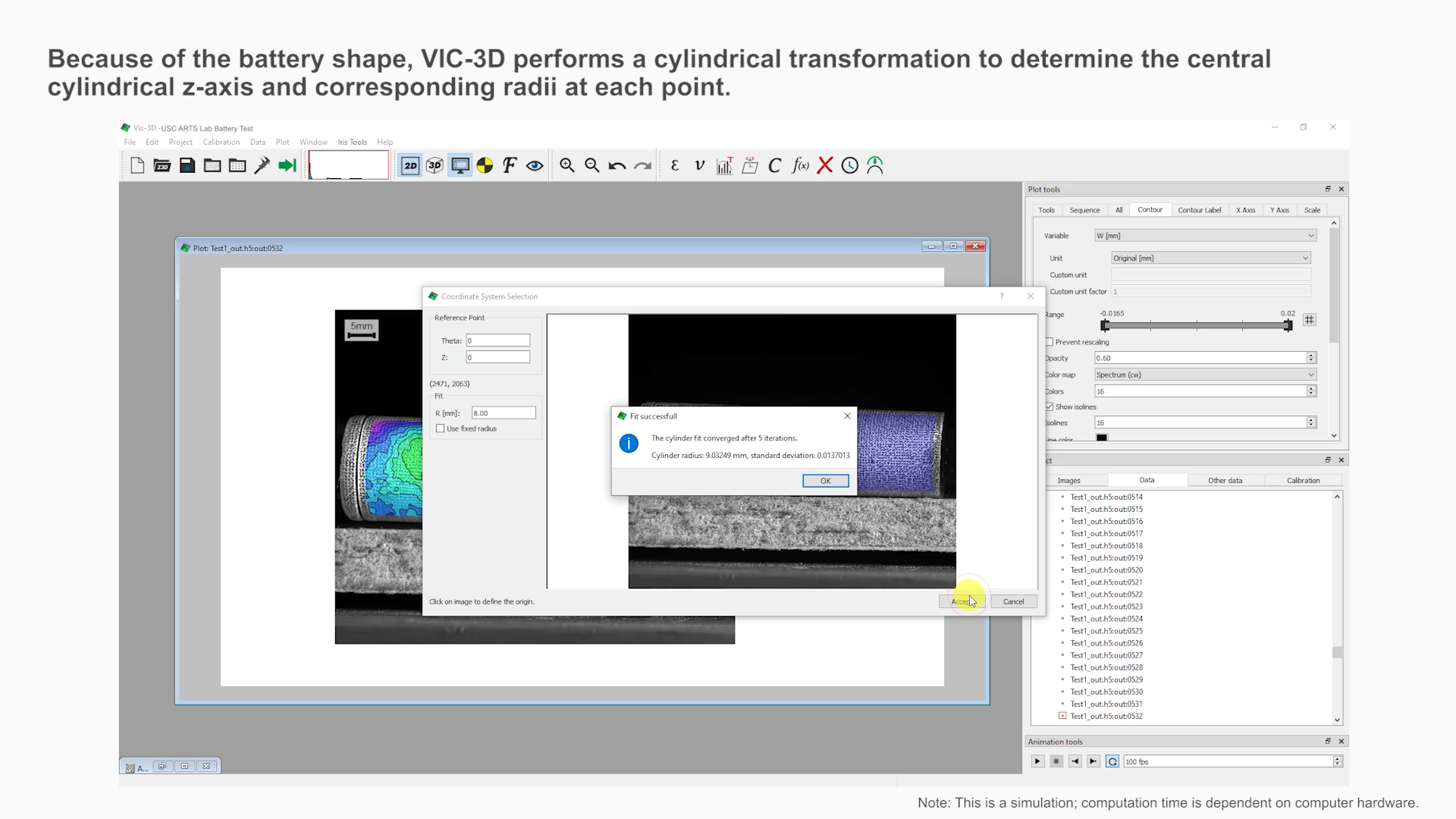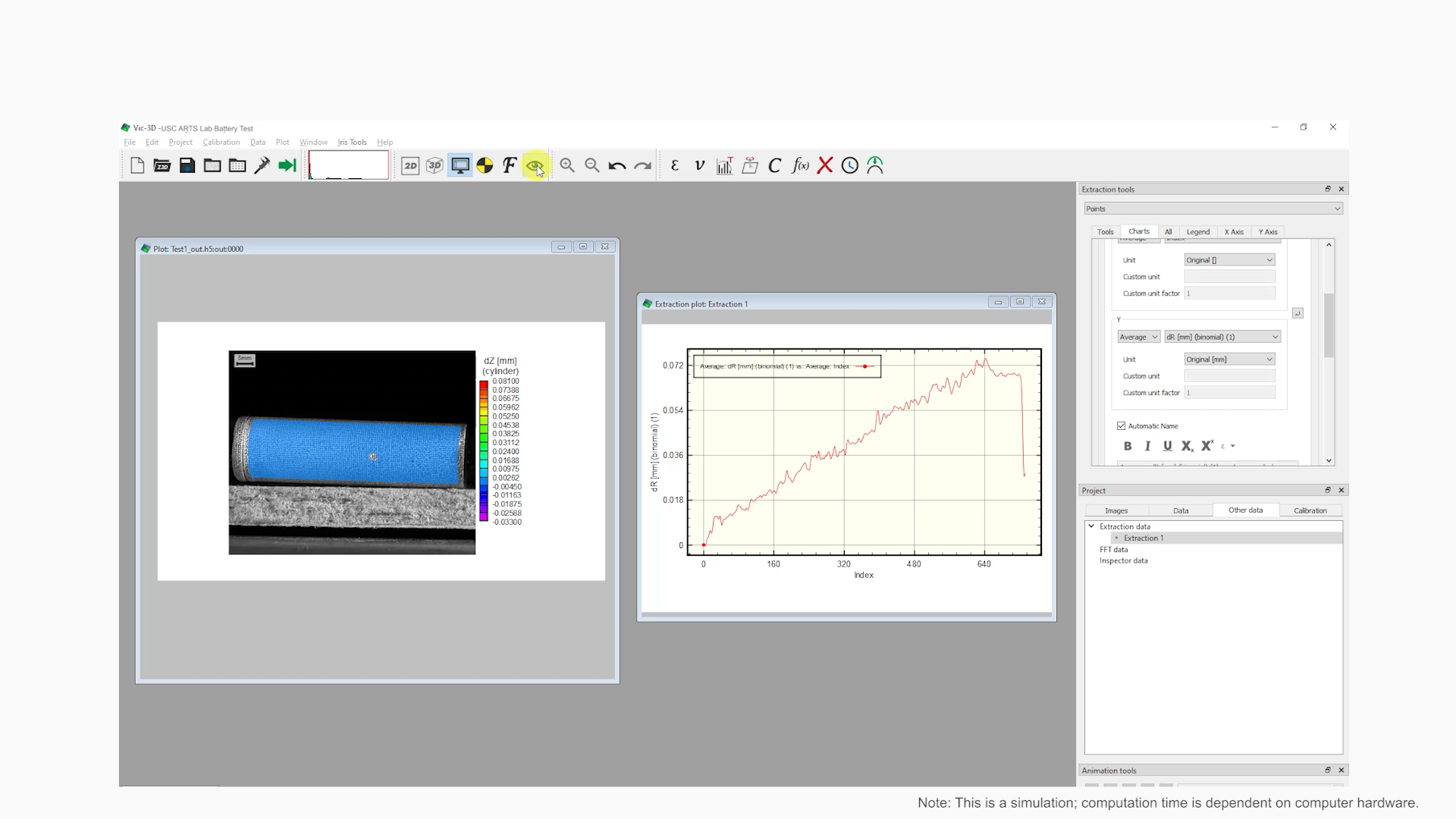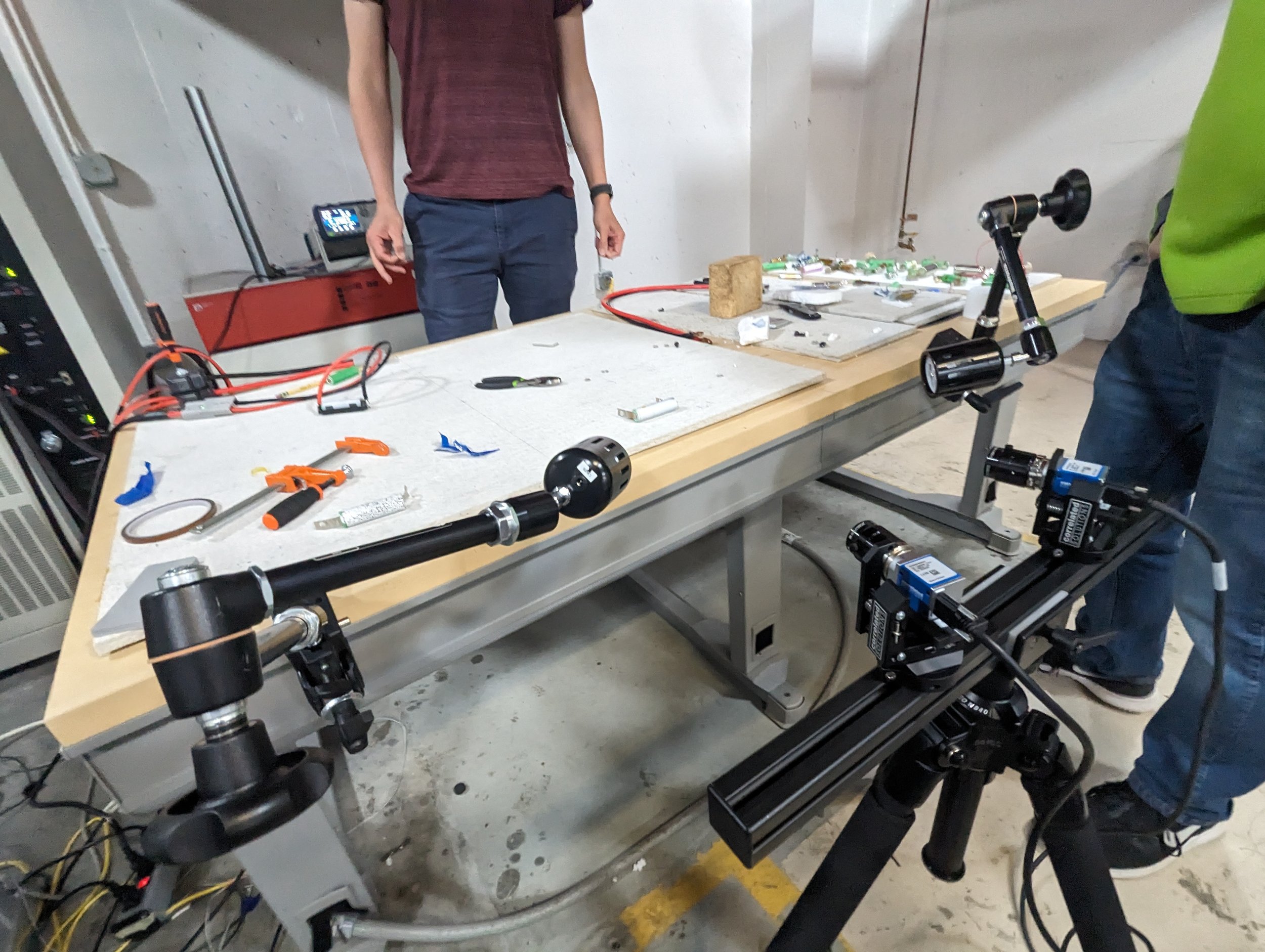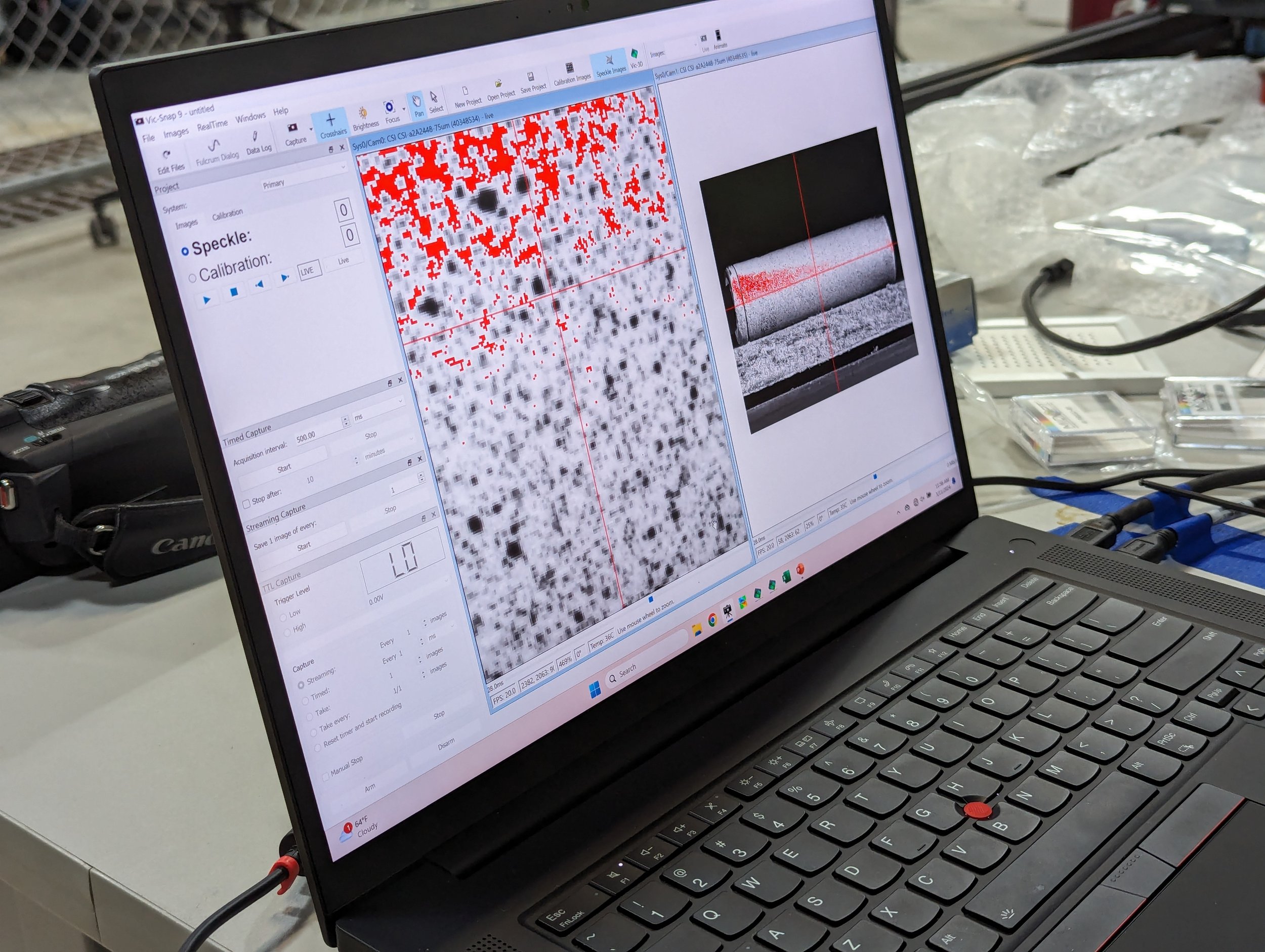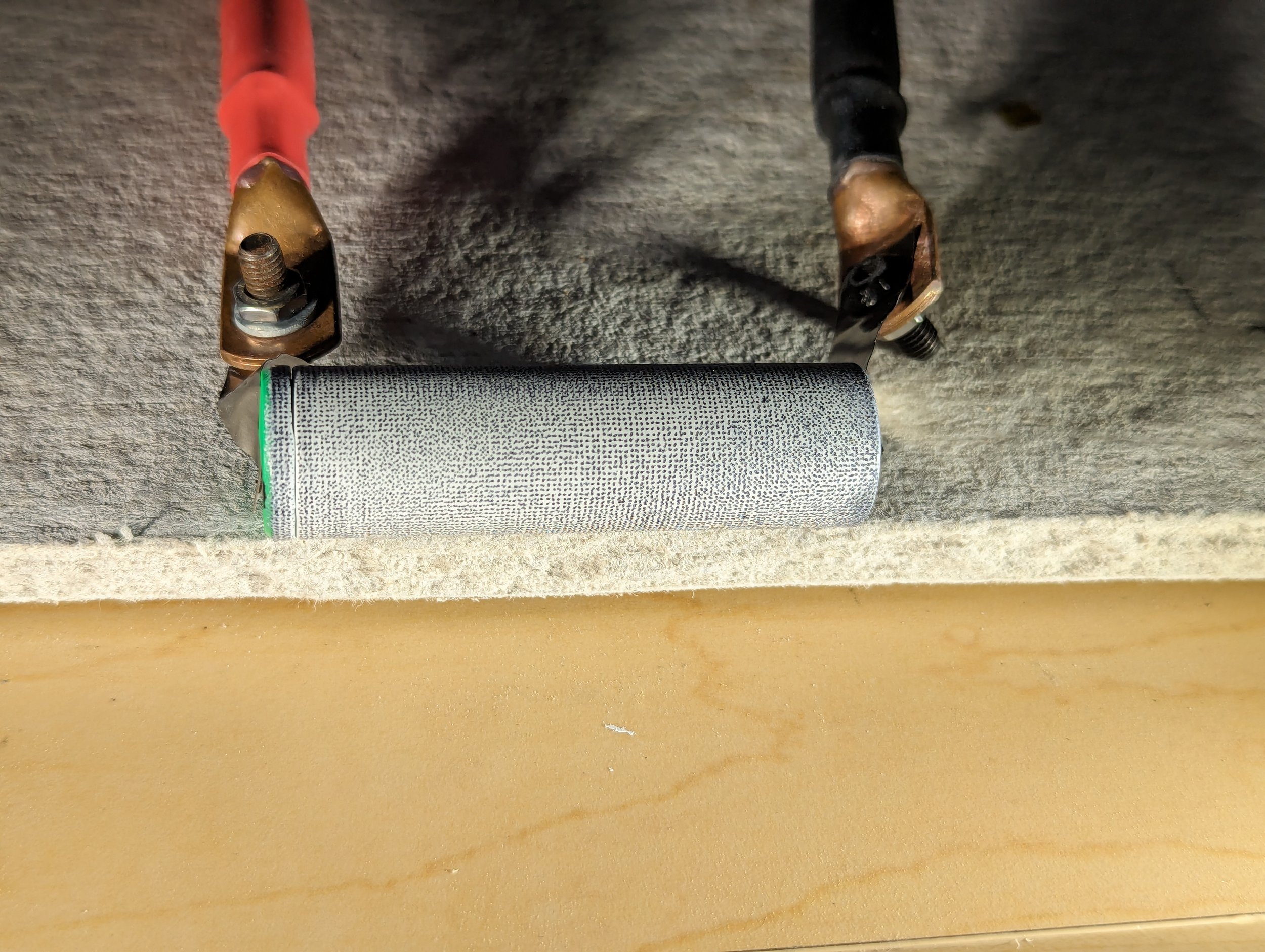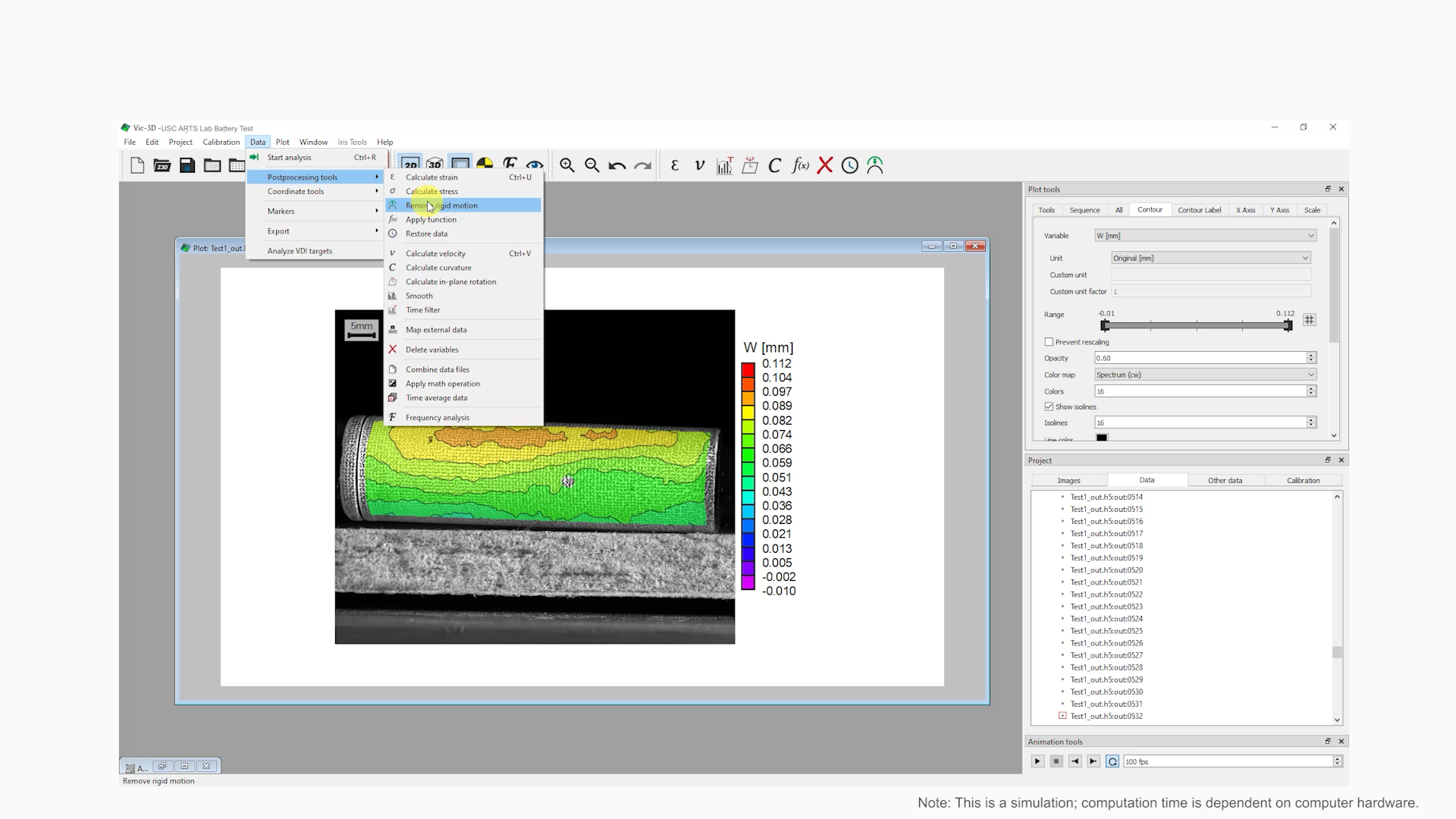Investigating the Strain and Degradation Parameters of Rapidly Discharging Lithium-ion Batteries using 3D Digital Image Correlation
Test Details
Battery: 18650 2500mAh 20A
Battery Test System: NHR 9200
DIC System: VIC-3D with 5 MP cameras, 50 mm lenses, 1050 LED light kit
Location: Adaptive Real-Time Systems (ARTS) Lab, College of Engineering and Computing at the University of South Carolina
Correlated Solutions recently assisted in an important research project in the College of Engineering and Computing at the University of South Carolina with members of Dr. Austin Downey’s research group who are investigating the degradation parameters of rapidly discharging Lithium-ion batteries in the ARTS lab (Adaptive Real-Time Systems). In some cases – especially in defense and aerospace applications – it is necessary to push battery performance to extreme limits. Dr. Downey’s team, working with support from the NSF and Airforce Research Laboratory are using a NHR 9200 Battery Test System to investigate the material characteristics of an 18650 2500mAh 20A battery as it rapidly discharges.
In this test, the focus is on Current Interrupt Devices (CID). CIDs play a critical role in ensuring safety in high-performance battery applications by interrupting current flow when it exceeds a predetermined safe limit. This prevents battery cells from overheating, which can lead to damage, fire, or even explosion. In high-performance batteries that are designed to deliver large amounts of current very quickly, this protection is essential to prevent catastrophic failure.
Generally, when batteries are subjected to high stress, the electrolytes inside the battery evaporate which creates an internal pressure prior to the triggering of the CID. In earlier stages of the research, strain gauges were deployed in an attempt to measure this building load. But the small size of the strain gauges created difficulty attaching the sensors and the limited measurement area proved prohibitive to meet the goals of the test. The team needed the non-contacting, full-field strain and deformation data provided by the VIC-3D digital image correlation system. DIC provided full-field displacement and strain measurements during extreme discharge conditions to identify the precise change in radius of the battery that immediately preceded triggering of the pressure-based CID.
The DIC setup included two 5 MP cameras with 50 mm lenses and the standard Correlated Solutions 1050 LED Light Kit with linear polarizers to help reduce reflections. After the cameras and battery were in place, the system was calibrated using a Correlated Solutions 5 mm calibration target.
Because triggering the CID renders the battery useless, it is vitally important to understand the degradation parameters of Li-ion batteries as they approach failure conditions. The upcoming article (abstract below) is an important step toward the development of future battery applications, and we’re proud to play a part.
A few details from the DIC perspective:
The AOI was drawn specifically to measure hoop strain on the battery as the pressure increased and the diameter changed. Therefore, the battery cap was omitted. A close inspection revealed a tiny artifact on the surface of the battery, so the AOI was adjusted to remove any artificial results. With a subset size of 45x45 pixels, and the step size set to 5, more than 700 pairs of speckle images were then analyzed. When the analysis is complete, the data can be viewed as a 3D plot and a 2D overlay on the speckle pattern. The contour plot can be changed, and other technical and graphic features are accessible.
Because of the battery shape, VIC-3D performs a cylindrical transformation to determine the central cylindrical z-axis and corresponding radii at each point. The ΔR at each point is computed as the battery heats up and the pressure increases. Applying a cylindrical transformation also applies a Cartesian transformation to align the cylinder axis exactly with the y-axis. This is also a test that benefits from the Remove Rigid Motion tool in VIC-3D, which subtracts rigid-body displacement from deformed images, leaving only deformation components of displacement. After these operations, the strain is computed again so that the Exx strain represents the hoop strain, and the Eyy strain represents the axial strain.
After computation, the powerful iris data visualization engine within VIC-3D can be deployed. This tool allows users to quickly and simply juxtapose 2D, 3D, line plots, images, and analog data in the same slide to display complex DIC results in an easy to comprehend and visually appealing presentation. The video to the left was exported directly from VIC-3D as an .mp4 file. Find out more about iris here.
“Exploratory Investigation of Early Detection for High-C Discharge-Induced Failure in 18650 Lithium-ion Batteries using 3D Digital Image Correlation”
George Anthony, Connor Madden, Emmanuel Ogunniyi, Austin R.J. Downey, Ryan Limbaugh, Jarrett Peskar, Jingjing Bao, and Xinyu Huang
ABSTRACT
The surge in demand for high-energy-density lithium-ion batteries has led to the exploration of high-C (high current draw) discharges in various applications. However, these high-C discharges introduce significant challenges related to battery performance and safety. This exploratory study aims to investigate early current interrupt device failure detection mechanisms in 18650 lithium-ion batteries subjected to discharges up to 16C. Our controlled experimental setup induces a 40 amp discharge to a single lithium nickel cobalt aluminum oxide 18650 cell. Employing Digital Image Correlation techniques, the structural changes in the battery are monitored during discharge, pinpointing subtle deformations and strain patterns as potential precursors to failure. This data, coupled with voltage and temperature measurements, offer a more comprehensive understanding of the battery performance under extreme conditions, allowing for future methods to further enhance safety protocols for high-C discharge.
Keywords: lithium-ion battery, high-C discharge, Current interrupt device, Digital Image Correlation, battery safety, non-destructive evaluation.


